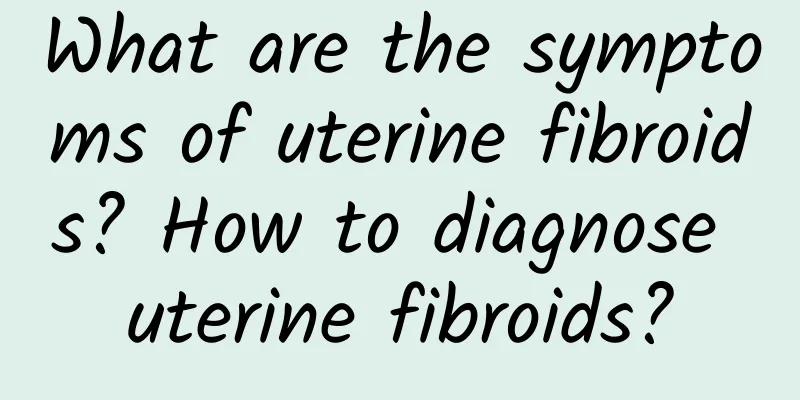What are the symptoms of uterine fibroids? How to diagnose uterine fibroids?

|
Women in menopause must pay attention, because at this time they are more susceptible to diseases such as uterine fibroids. Uterine fibroids are multiple benign tumors, but they also have the possibility of malignant changes. Therefore, patients should detect and determine the treatment plan for uterine fibroids in the early stage. Therefore, it is very important to understand the symptoms of uterine fibroids in the early stage, which can help us treat these uterine diseases more timely. Uterine fibroids show different symptoms according to the growth site of the tumor and other factors. Some patients have no obvious symptoms, which is often not conducive to the treatment of uterine fibroids. The main symptoms of uterine fibroids include: The vast majority of uterine fibroids can cause menstrual changes, usually excessive menstrual bleeding, prolonged menstrual period, shortened physiological period, etc. Due to the different growth sites and sizes of uterine fibroids, different compression symptoms can occur. Because uterine fibroids change the morphology of the uterus, or hinder the implantation of fertilized eggs, or uterine fibroids grow in the corners of the uterus, hindering sperm from entering the fallopian tubes, as well as uterine fibroids and ovarian dysfunction, infertility can be caused. When shallow ulcers appear on the surface of submucosal fibroids, leucorrhea will increase. Purulent leucorrhea can be complicated by infection. Uterine fibroids can make patients feel as if something is pressing on their abdomen, and sometimes the pressure is more severe. Some patients can feel a lump in the lower abdomen, which is as big as a pear, and the bladder is more obvious in the morning. The reason for excessive or long menstruation is that uterine fibroids enlarge the volume of the uterus, and the area of the endometrium increases accordingly or the endometrium is too thick, which hinders uterine contraction. These obvious menstrual changes mainly occur in submucosal fibroids and intramural fibroids. A small number of patients may have dysmenorrhea or lower abdominal pain Therefore, it can be said that there are many symptoms of uterine fibroids. These symptoms seem to have nothing to do with uterine fibroids, but if there are various similar symptoms, we should pay attention to them. However, it is not very reliable to find uterine fibroids based on symptoms alone, and regular diagnosis can detect the disease early. |
<<: What are the specific symptoms of uterine fibroids? What are the hazards of uterine fibroids?
Recommend
Patients should pay more attention to daily conditioning to assist in the treatment of uterine fibroids
At present, uterine fibroids are already a common...
The examination of painless abortion should be carried out carefully
Before the painless abortion surgery is performed...
What to do if you have an ectopic pregnancy
The occurrence of ectopic pregnancy is undoubtedl...
Can I get pregnant with uterine fibroids?
Patients with uterine fibroids can get pregnant, ...
Is it okay to remove hair right after menstruation? How to remove hair after menstruation?
Women are now facing an embarrassing season of ex...
Get rid of the big food monster after the New Year! Nutritionist Zhao Hanying: 2 tips to regain your bird-like stomach
The longest 10-day Spring Festival holiday in his...
What should patients with ectopic pregnancy pay attention to in their daily lives?
There are more and more patients with ectopic pre...
What are the dangers of ovarian cysts
Ovarian cysts may cause reproductive health probl...
It is necessary to understand the treatment of ectopic pregnancy
Understanding the treatment methods for ectopic p...
What should I pay attention to when doing painless abortion at the age of 45?
What should I pay attention to when having a pain...
Can premature ovarian failure at the age of 32 be cured?
Can premature ovarian failure at the age of 32 be...
Can microwave treatment really eradicate cervical erosion?
Can microwave treatment really eradicate cervical...
Common symptoms of pelvic inflammatory disease in women
Pelvic inflammatory disease is also a type of fem...
How to repair congenital absence of vagina?
How to repair congenital absence of vagina? Conge...
Experts explain the diagnostic methods of ectopic pregnancy
Ectopic pregnancy is a common disease in women. I...









